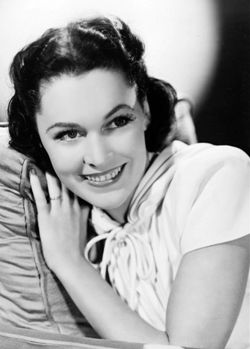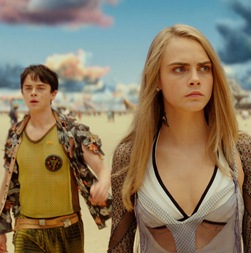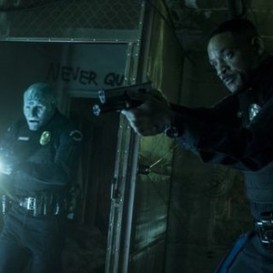What’s truly sad is that this is now an important discussion in America. How the Hell did that happen? But fanboys are at the heart of not only the wars in lit fiction, gaming, and genre film fandom, they are at the heart of our political split. National politics has been determined by fanboys.
But OK, I’ll pull this in to film, because film is my area. And I’ll be swiping from one of my own earlier posted comments.
What’s so bad about being a fanboy? Well, it depends on how your use the term–it isn’t tightly defined. I use it one way; you may use it another. If you use it another, be clever enough to realize I’m not using it your way. I find the way I use it better because it is useful. “Fan” no longer means fanatic in popular parlance, but rather “person who enjoys X” Using Fanboy to mean “fan” or “male fan” doesn’t give us anything new. However, using it to describe a certain kind of “person who enjoys X,” one who leans into being a fanatic and has certain traits does give us a term for something that needs a term. And it is how I and many others use the term fanboy. So, lets look the two big problems–those traits–with those I label fanboys, and do it in relation to film. And those problems are nostalgia and identity.
Firstly, a fanboy’s love of a film franchise (or anything) is not directly related to the films. It is directly related to his own imaginings, his memories of how it made him feel when young, etc. It may be the film that drowned out his parents fighting or distracted him when coming home after being bullied at school. Or maybe it was what he was watching when he got his first kiss. Whatever the case, fanboys no longer can properly view the source. This makes them useless for critical discussions of film (and considering I run a film festival, etc, I’m very big on critical discussions of film). What fanboys can talk about is how they personally feel, which would be fine if they didn’t keep getting into critical discussions of film and demanding that their personal feelings are of universal importance. If a fanboy says, “I didn’t like The Last Jedi because it doesn’t give me the emotional support that RotJ did thirty years ago,” that’s perfectly reasonable (though why they need to say this to the world instead of a few close friends is another matter). If they say, “The Last Jedi is terrible because it isn’t Star Wars and destroys the childhoods of millions,” this is fetid nonsense. It is the difference between speaking about your preferences and what is good. Fanboys speak entirely subjectively, but then project that onto the objective world. (This is why there are grown adults who find they can spit out the sentence “The Transformers are great!”). Nostalgia is always going to cripple one’s ability to evaluate items or franchises–thus I am never a fan of nostalgia. But the fanboy takes it further, believing they are not crippled, and that their rose-colored glasses (or the opposite) reveal great truth.
And secondly, and this is more important to the general population, a fanboy identifies with the franchise. His own self worth is tied up with the franchise. Thus, an insult to the franchise is a personal insult to him. Someone disliking the franchise is no longer a case of different opinions, but an attack to be responded to with anger. And this is generally terrible for society (we’ve had enough problems with that sort of silliness with sports and now it is the very foundation of our political discourse). I saw this a lot in my discussions of BvS. Fanboys got very angry at me, swearing and making threats. As Superman and Batman and DC characters in general are a part of their identity, those characters must be shown respect. If they are laughed at, then this is equivalent to laughing at the fanboy. Since he has tied himself to something–in this case comic book characters–, respect for them equals respect for the fanboy, and more importantly, a lack of respect for them equals a lack of respect for the fanboy.
The fanboy’s view of reality can be twisted by this need. The fanboy needs to feel that he is good (as everyone does), and as he identifies with Superman or Star Wars or old-style SF lit or gaming, etc, then those things must be good–objectively good. So if others say they don’t like them, they must be lying. They must have an ulterior motive. And so, they end up believing wild conspiracy theories to explain other people’s opinions (Ah, critics don’t like Bat v Supes! It must be because they are all biased for Marvel due to Disney’s powerful control of them! Someone doesn’t like these stories? They must be pushing a secret Marxist agenda! Critics don’t like Bright? They must be under the thumb of film corporations trying to take down Netflix). Most people, even fanboys, agree that getting angry over different tastes is foolish, but getting angry over lies and deceit and conspiracies, that seems reasonable.
I’m seeing this with The Last Jedi, but in this case the fanboys dislike it because it is not matching the identity they cling to. Now some non-fanboys don’t like The Last Jedi. Tastes vary and that’s all good. If someone didn’t like it because it doesn’t appeal to them, then they didn’t like it. And that’s their reaction. They just shrug and find something they like. But for fanboys, changes from what they imagined, changes from their identity, are an attack. They don’t shrug. For them, it questions their identity, and that makes them angry. And we are seeing this anger now. No one who just doesn’t like something gets angry. (I didn’t like Alien 3 but it didn’t make me angry and cause me to threaten the director). So we get cursing and diatribes that grow to death threats. Because they didn’t like a movie…
And that’s why fanboys are a problem. The heart of the problem is nostalgia and identity, the foundation of conservatives and alt-right folks, and unfortunately, a far too prevalent factor in the lives of liberals too. Many of the societal problems of the moment (racism, sexism, anti-trans, etc) are directly connected to nostalgia and identity. Those two are what gave us our current president. But that’s politics, not movies, and implies it is just a right wing problem. It’s not. A majority of the people I interact with on FB (that means you) are wrapped up with one or both of those. And a significant number are fanboys. A significant number can, with a straight face, say, “Well, it was a good movie, but it was a terrible Star Wars movie and I hate it” without realizing what you just said.
No movie can destroy your childhood, or even your view of your childhood, unless there is something very problematic with your own ego–perhaps a franchise being used as a crutch. And everyone is aware that we use crutches to get better, not as life long friends.
Fanboys make discussion of art impossible. They are angered by opinions (much less facts) that differ from their view of the world. And they are easily deluded on what the world is like.
So yeah, Fanboys suck. Try not to be one.
 Maureen O’Sullivan was the great ingénue. She appeared to be sensual and exciting while simultaneously being innocent and cute. It was a balancing act few have managed to pull off. Unfortunately it put her in mainly supporting roles where she was the goal—of the eight films below, only two have her as the lead. The exception was the part that brought her fame: Jane in the Tarzan franchise. For the first films, Tarzan is not the star, but Jane, and it is a Jane who is at ease scantily clad and sexy, that is until the production code caught up with the 3rd movie.
Maureen O’Sullivan was the great ingénue. She appeared to be sensual and exciting while simultaneously being innocent and cute. It was a balancing act few have managed to pull off. Unfortunately it put her in mainly supporting roles where she was the goal—of the eight films below, only two have her as the lead. The exception was the part that brought her fame: Jane in the Tarzan franchise. For the first films, Tarzan is not the star, but Jane, and it is a Jane who is at ease scantily clad and sexy, that is until the production code caught up with the 3rd movie.


 It’s time for my 10 Worst Fantasy and Science Fiction Films of 2017. I’ve been ranking the films all year as I see them, and this won’t quite match that list as I want an apples to apples comparison, so I’m only including wide releases or big budget pictures. Sure, some micro-budget VOD films would break into this list, but there’s no joy in attacking those. I’m looking at the great follies of man.
It’s time for my 10 Worst Fantasy and Science Fiction Films of 2017. I’ve been ranking the films all year as I see them, and this won’t quite match that list as I want an apples to apples comparison, so I’m only including wide releases or big budget pictures. Sure, some micro-budget VOD films would break into this list, but there’s no joy in attacking those. I’m looking at the great follies of man.









